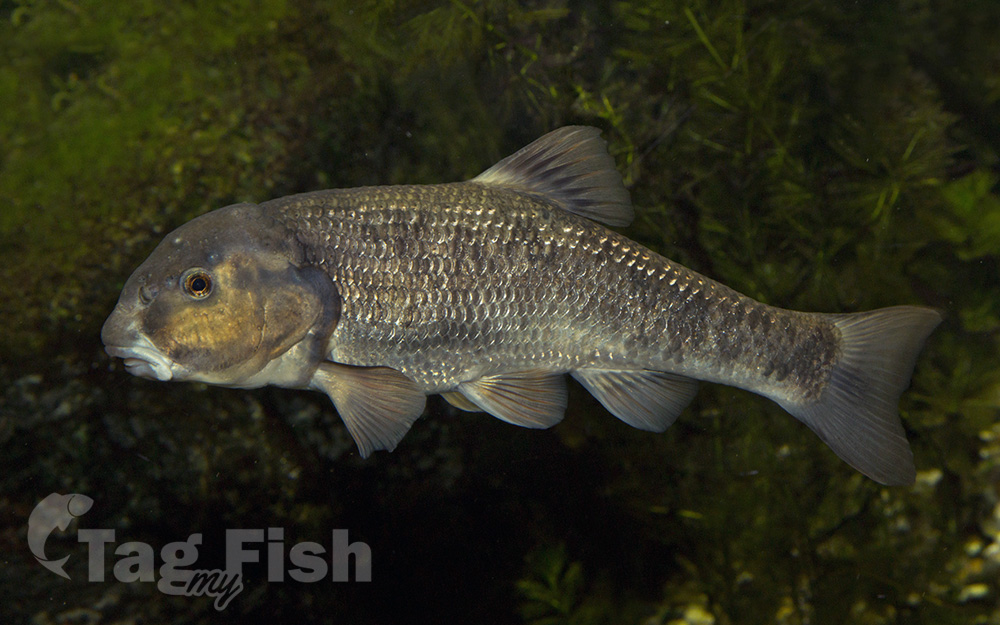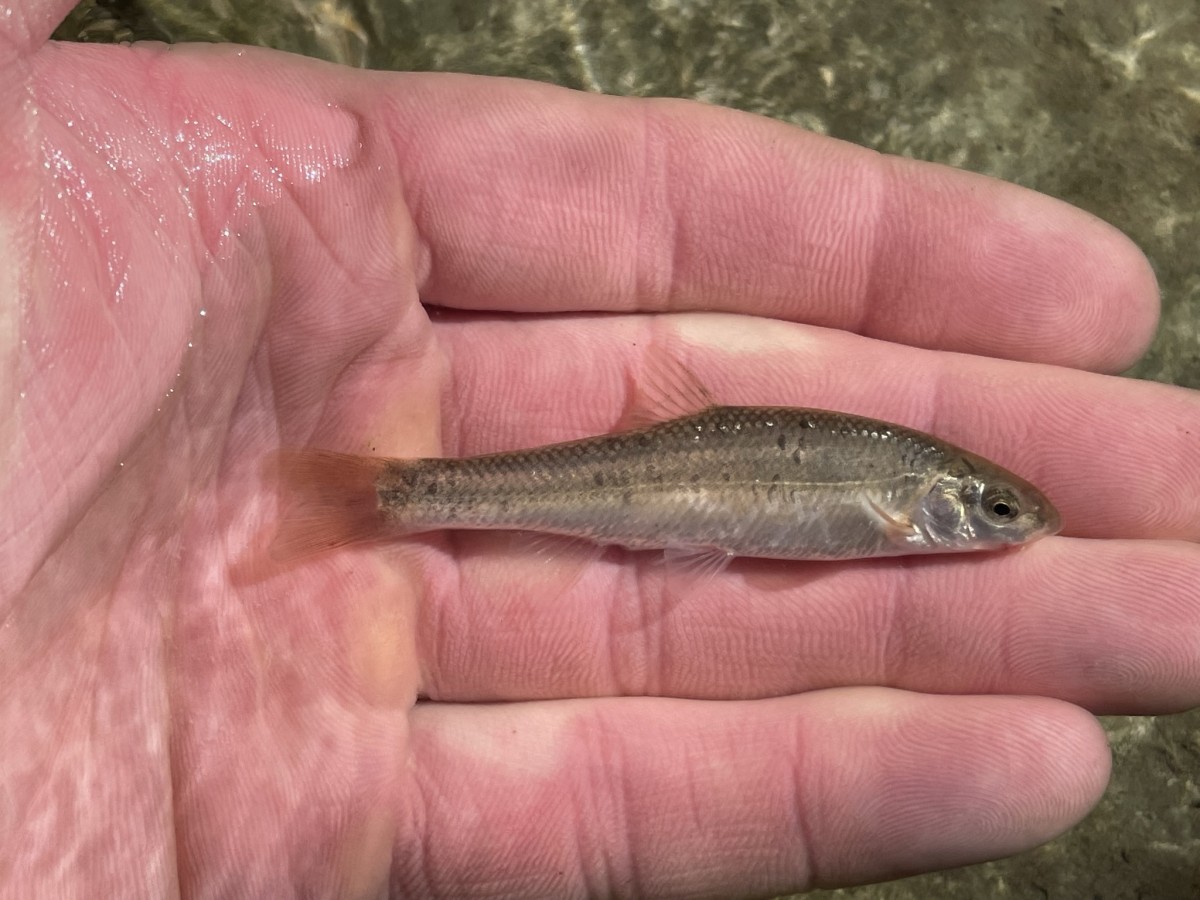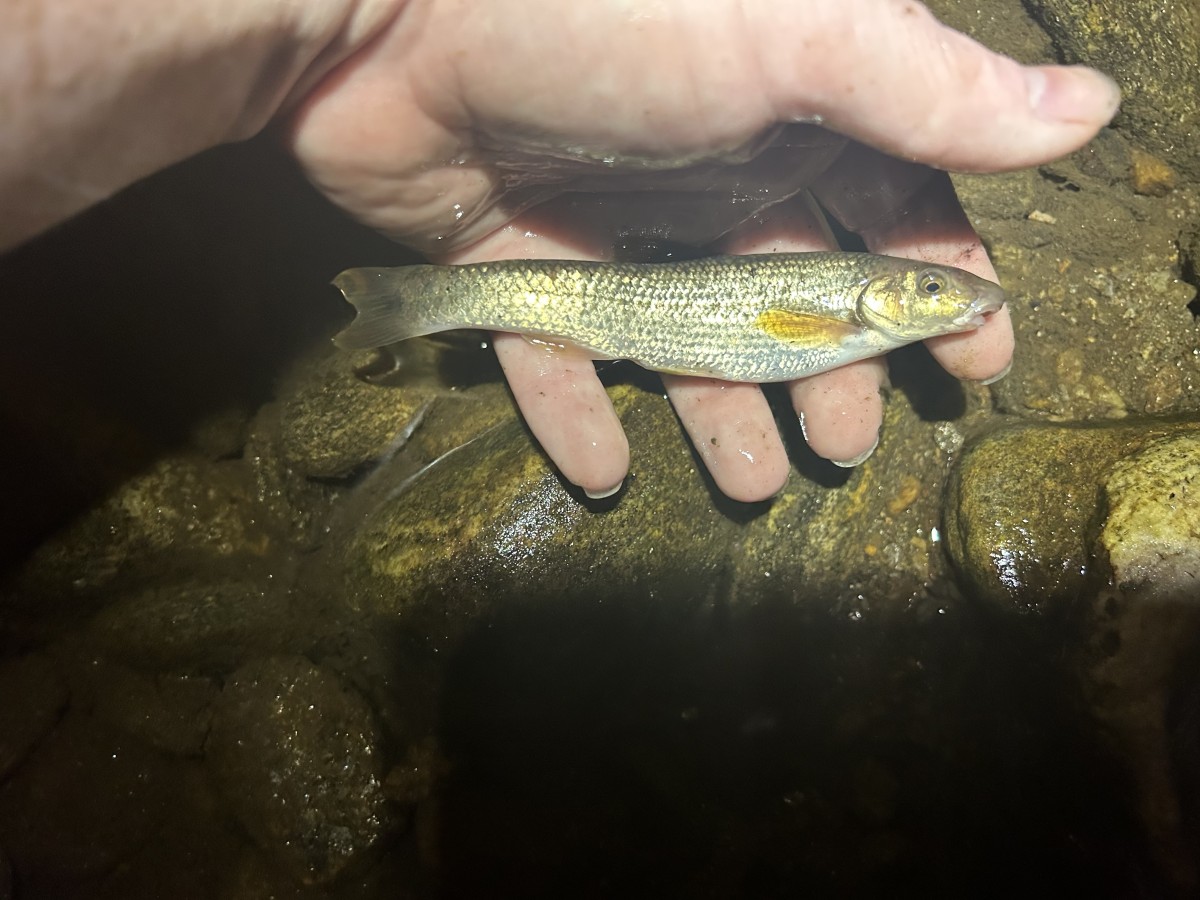Central stoneroller
(Campostoma anomalum)

Classification
General data
The central stoneroller (Campostoma anomalum) is a fish in the family Cyprinidae endemic to North America.
Biology
Stonerollers have a rounded snout overhanging a crescent-shaped mouth, a hard ridge of cartilage on the lower lip, and irregular patches of dark colored scales on the sides of the body. Breeding males have orange colored fins with a black band on the dorsal fin and often on the anal fin; breeding tubercles (keratinized growths) also cover the head, back, and sides of the body.
Distribution
The central stoneroller is widespread in freshwater streams throughout a large portion of the eastern, central, and midwestern United States. It is present in the Atlantic Ocean, Great Lakes, Mississippi River, and Hudson Bay basins in the US, from New York west to North Dakota and Wyoming and south to South Carolina and Texas. Isolated populations are also found in Canada and Mexico. The central stoneroller is benthopelagic, inhabiting either the midwaters or bottom of freshwater streams and rivers. It requires some current and is most commonly found in riffles and pools of moderate to high gradient streams with a gravel substrate bottom. However, it is a very tolerant species and can be found in almost any stream system with adequate food, leading to it widespread distribution.













